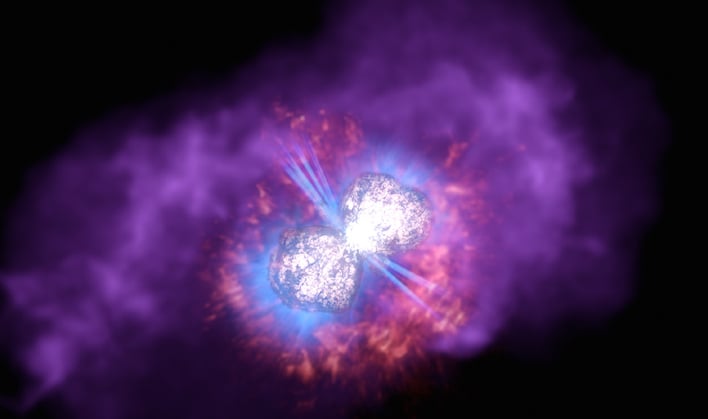NASA 3D Model Visualizes The Great Eruption Of The Violent Eta Carinae Star In 1840

NASA recently captured the eruption of a volcano in the South Pacific that triggered destructive tsunami waves. It is estimated the eruption was the equivalent of somewhere between 4 to 18 megatons of TNT. The blast itself released hundreds of times the equivalent mechanical energy of the Hiroshima nuclear explosion. However, when the star Eta Carinae erupted in 1843, NASA was not around to capture the event. But a century and a half later, astronomers and artists have been able to recreate a three-dimensional model of the star and have produced a video that explains why the star lost its luster in the night sky.
Eta Carinae, or Eta Car, is well known in the world of astronomy for its noteworthy outburst, called the Great Eruption. The eruption, which released almost as much light as a supernova explosion, was observed in the 1840s and for a short moment made it one of the brightest stars in the night sky. Over the next 50 years or so, the light from the star slowly faded. This is due to a small nebula of gas and dust, called the Homunculus Nebula, that was released during the blast, and has since blocked the light of the star.
The hourglass shape that is enshrouded in clouds of glowing gas has now been replicated by a astronomers and scientists at the Space Telescope Institute (STScI) in Baltimore, Maryland. The group has created three-dimensional models using observations from NASA's Hubble Space Telescope and Chandra X-ray Observatory that show the details in visible, ultraviolet, and X-ray light.
Eta Carinae is one of the largest stars known. These massive stars are inclined to outbursts during their life spans. Once their life is complete, they will collapse into a black hole, which will more than likely be accompanied by a supernova explosion. Because Eta Carinae is exceedingly bright at infrared wavelengths and its radiation has such a enormous impact on the Carina Nebula where it exists, it is one of the most studied examples for learning about the energetic life and death of extremely large stars.
Kim Arcand, visualization lead scientist at the Chandra X-ray Center in Cambridge, Massachusetts, said, "We can take these models like the one for Eta Car and use them in 3D printing and augmented reality programs. This means more people can put their hands on the data, literally and virtually, and this makes for better learning and engagement."
If you would like to learn more about Eta Carinae and attend an online live chat with Summers, you can visit Universe Unplugged to find out more.

